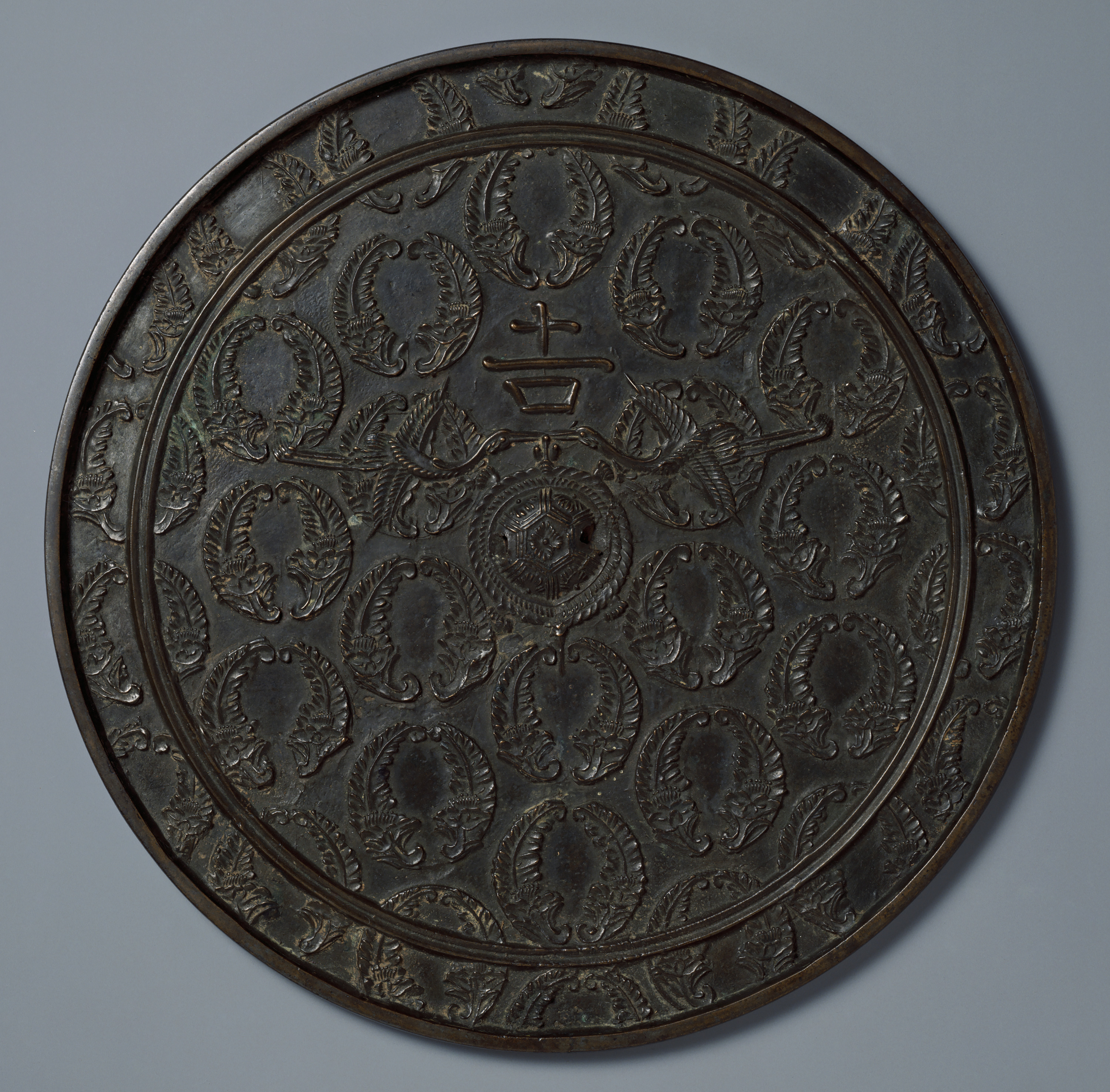- TOP
- Mirror with the Character "Kichi" (Auspiciousness), Ringed-Ginger Crests, and a Pair of Cranes
Overview
Mirror with the Character "Kichi" (Auspiciousness), Ringed-Ginger Crests, and a Pair of Cranes
- Museum No.
- EK241
Showing 1-6 of 1
| Title | Mirror with the Character "Kichi" (Auspiciousness), Ringed-Ginger Crests, and a Pair of Cranes |
|---|---|
| Designation | |
| Artist | |
| Category | Metalwork(E), Bronze Mirrors |
| Country | Japan |
| Period | Edo |
| Century | 17th |
| Year | |
| Quantity | |
| Materials | |
| Dimensions | Diameter 24.2cm Rim height 0.7cm |
| Inscription by | |
| Signature/Seals Etc | |
| Donor |
This object may be one within a set or the title of a set. To see all objects in the set, perform a Category Search by the Museum Number below, entering numerals only before the hyphen.







This dark brown brass mirror has a reflective face plated with tin. The knob and knob surround together take the form of a tortoise, the shell of which is decorated with a tortoiseshell pattern enclosing floral lozenges. The rim is flattened on top. A small cast mark on the rim, where the metal was poured into the mold, is conspicuous, probably resulting from a flaw in the casting.
Directly above the beaks of the paired cranes, the character for "auspicious" (J., kichi), stands out in relief. Mirrors incorporating characters in their designs first appeared in the 17th century and were at their peak of popularity in the 18th century. The use of a spatula to create the fine lines of the character, as in the museum example, is characteristic of the earlier period. The word for ginger (J., myôga) and the Buddhist term meaning "divine protection" (J., myôga) are homonyms, and a prayer for this protection is thus incorporated into the design, which evolved into stylized crests. The form of two embracing arms, such as this one, is referred to as an "embracing myôga crest.
Japan-Edo